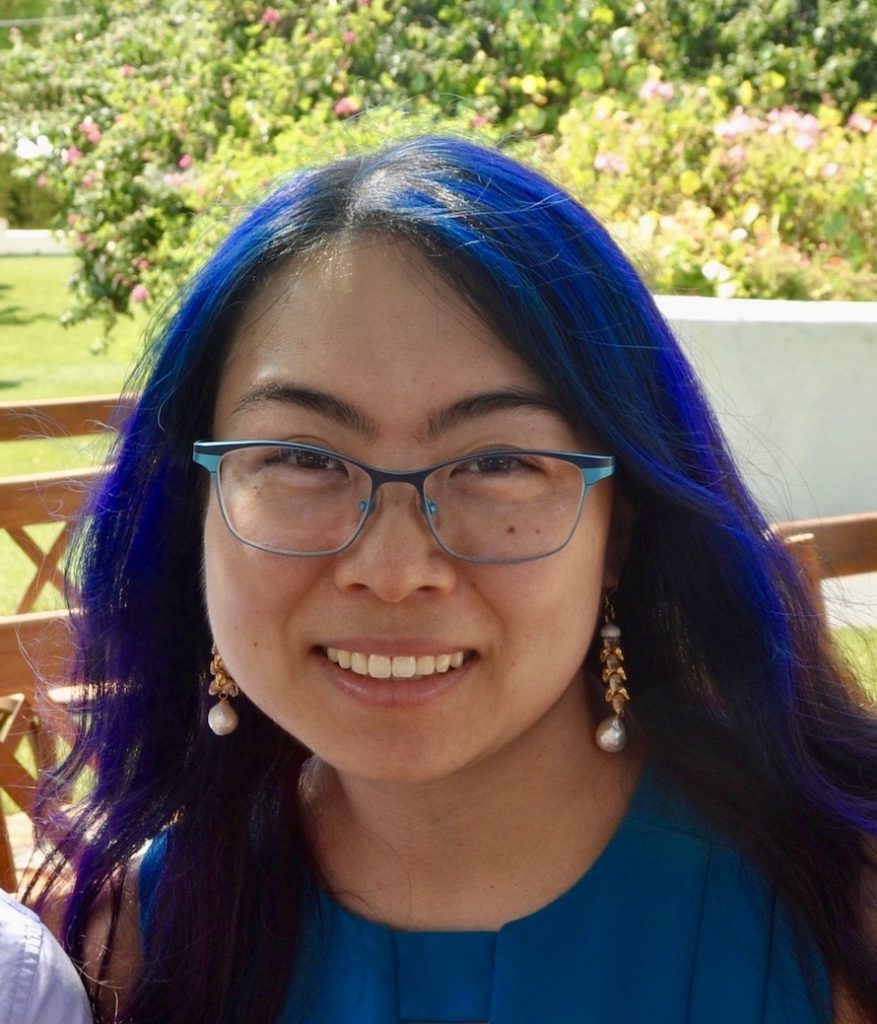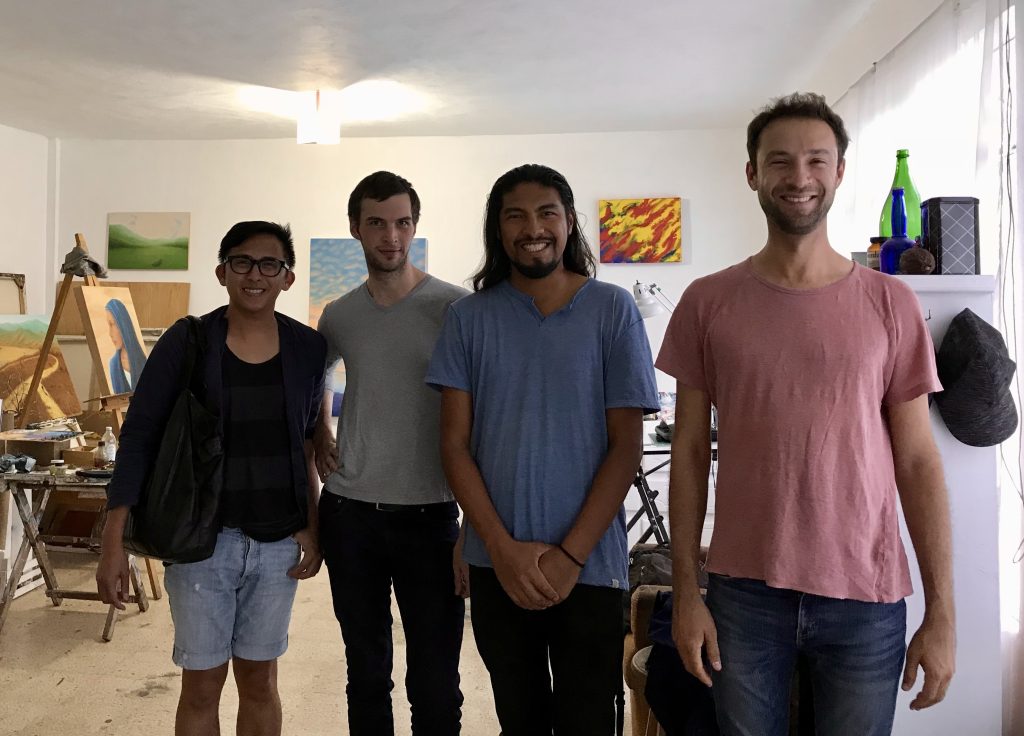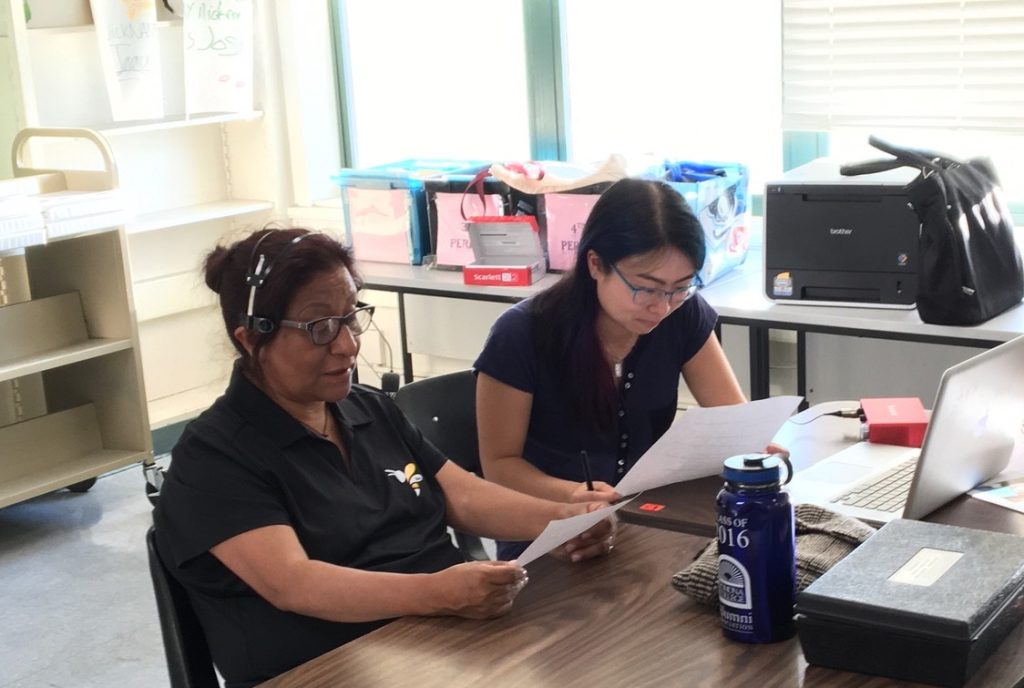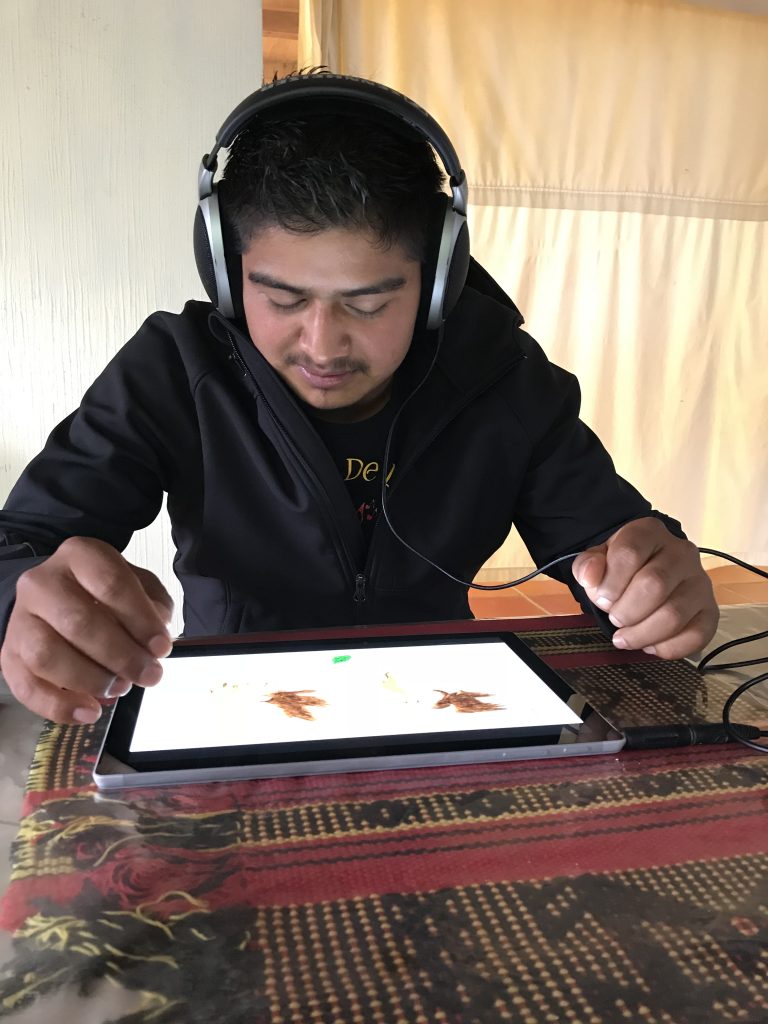Dr Kelsey Sasaki is a Junior Research Fellow at Jesus, and John Fell Postdoctoral Research Assistant in Linguistics. Her research, for which she has just been awarded a Leverhulme Trust Early Career Fellowship, focuses on how narrative discourse is comprehended and represented in memory, merging insights from formal pragmatics and psychological theories of how we process and understand language.
Kelsey is also a linguistic fieldworker and, alongside colleagues at the University of California Santa Cruz, works with speakers of the indigenous Mexican language Santiago Laxopa Zapotec. We caught up with her to find out more.

Dr Kelsey Sasaki
Kelsey, let’s start with the obvious question – what made you choose Linguistics as the subject for your studies and research?
Well, I should start by saying that I wasn’t a Linguistics major at first. I was originally in a music business programme, and then a pre-med student. I eventually decided to study for a BA in Linguistics at New York University – I was always good at English class and thought that was what Linguistics was (it is definitely not that, of course)! In my undergraduate department there were a couple of people studying Sociolinguistics and I was interested as one of my family languages is Hawaii Creole. I had heard it being spoken when I was growing up – my dad’s family is from Hawaii – but didn’t understand what it was, and that kind of drew me in.
When thinking about a PhD, I knew I was interested in doing fieldwork, which is why I chose to do my graduate study at UC Santa Cruz, which offered that as part of the course. It just so happened that in the year I did my field methods training, the consultant, Maestra Fe Silva Robles, was a speaker of Santiago Laxopa Zapotec – part of the wider Zapotec family of languages spoken in Oaxaca, Mexico. A group of us, including graduate students, professors, and Maestra Fe, founded the Zapotec Language Project. It was lucky timing and a great privilege for me because Maestra Fe was already a long-tenured leader in the Latino community in Santa Cruz, and was really committed to working with us, sharing her resources, and giving us advice on how to best serve the community in return.
My thesis ultimately focused on Psycholinguistics, and involved experiments related to the English language, but my fieldwork interest was Zapotec.

Part of the research team in Oaxaca City. From left to right: Dr Jed Pizarro-Guevara, Dr Steven Foley, Roque Reyes Mendoza (Oaxacan artist and illustrator for the project), and Professor Maziar Toosarvandani.
Tell us more about Psycholinguistics?
A psycholinguist studies the psychology of language – the relationships between linguistic behaviour and psychological processes. Within the tradition of formal linguistic theory, linguists tend to study speakers’ conscious, introspective interpretations of linguistic units like sentences. However, a lot of subconscious, moment-by-moment activity has to happen to make that conscious interpretation possible. That’s where psycholinguists come in – we study how people process language in real time. We explore what kind of mental processing occurs to help someone towards that final interpretation of what they’re hearing or reading. A lot of things that psycholinguists are trying to measure are the things people are not consciously aware of. For example, if you show an English speaker something written in English, they’d probably feel that they just read it automatically, and wouldn’t be super aware of where things were difficult to process moment-by-moment. In psycholinguistic studies, you can begin to tap into how those subconscious processes unfold, and observe where people unconsciously find difficulty in a sentence, how they can resolve those difficulties, and how they file away in their memories whatever information the sentence conveyed.
And what peaked your interest in Zapotec?
The Zapotec language group is quite diverse, and very interesting. It’s not particularly well-known in the Anglophone world – some assume that it’s related to Spanish because it is spoken in Mexico, but they’re definitely not related!. There are only around half a million speakers left. This might sound great for an indigenous language, and it’s certainly not the direst linguistic situation from this zoomed-out perspective. However, within this language group there is a huge amount of diversity, partly because the Zapotec language family is very old; about as old as the Romance language family, and being so old means there are many varieties and sub-varieties, some of which only have a handful of remaining speakers. The variety I study – Santiago Laxopa Zapotec – has about a thousand speakers, and is spoken in the town of Santiago Laxopa, which is in the Sierra Norte region of Oaxaca. Each town or village in the mountains is relatively geographically isolated from the next, and so, town by town, there are noticeable variations in language, and people are able to tell where other speakers are from. Still, speakers of different Sierra Norte Zapotec varieties can often understand one another well enough. However, Sierra Norte Zapotec speakers and speakers from Oaxaca City, the state capital, can’t really understand one another’s varieties at all, even though the capital is just a four-hour drive away from Santiago Laxopa.

The Sierra Norte, from just outside Santiago Laxopa.
There are a lot of Oaxacans in the diaspora across California, and in Los Angeles (where I’m from) there is quite a large Zaptoec-speaking population. One of my professors and I were able to work with a couple who originated from very nearby Santiago Laxopa—the wife is from two towns away, and husband from three towns away. So between Maestra Fe and this couple, we had three very closely related varieties of Zapotec, and collected a lot of data on the linguistic variations between them. This data enables us to learn more about humans’ linguistic ability and investigate different aspects of grammar such as phonology (sound system), morphology (word formation processes) syntax (sentence structure) and semantics (meaning). Other linguists are working with people from other local villages, so we were able to compare our findings with theirs to better understand the linguistic mechanisms for language variations across the area.

Maestra Fe Silva Robles and Kelsey recording sentences of Santiago Laxopa Zapotec.
The Santiago Laxopa community is also interested in the language, from a conservation perspective. They were already looking at how to preserve their indigenous language and a group of mums in the town had already started to write it down as a way to conserve it for future generations. Local kindergarten teachers have created some teaching materials in the language as well.
There has been significant ethical discourse around working with indigenous peoples in ways that ensure they also benefit from the academic research taking place in their countries or home towns. What was your approach in Santiago Laxopa?
Our main consultant, Maestra Fe, and her family spend a lot of time in Santiago Laxopa each summer. She was able to introduce us to town leaders that she knew, and discussed with them the most appropriate way to compensate people for the time they spent helping us with our research. She helped us figure out that bringing in money would not be appropriate for that area, but that items like umbrellas, torches and waterproof ponchos were needed – things people could use. She also helped us find a place to meet with people which was the elementary school, where we gave English lessons for the kids in exchange for use of the space during the summer holidays.
We also wanted to try to support the community by contributing to their language conservation efforts – that’s part of the foundation of the Zapotec Language Project. Any committed linguistic fieldwork project will end up with a sizable language database, and in our case, we make the data available to the public and strive to make it accessible to the indigenous speakers and other members of the community. So we created an online dictionary for Zapotec. During downtime from our fieldwork, we’d process recordings made with local people and clip out new words, and full sentences and add them to the dictionary. On the text side, we recorded stories and other narratives with village members – stories about daily life in the town, historical details and the like. So we’re slowly growing a digital database of the language, and working to make it an accessible resource for the community and interested people to use. It can also be used by other linguists carrying out comparative research.

A speaker of Santiago Laxopa Zapotec participating in the research team’s psycholinguistic study.
You joined Jesus College as a Junior Research Fellow in Linguistics in 2021. Does that mean leaving your research on Zapotec behind?
I hope not. In the final year of my PhD, I got to work with a non-profit organization, founded by Maestra Fe and her sister, that serves the Latino community in Santa Cruz. It was a wonderful experience and a great privilege, but I wanted to stay in academia. Luckily for me, the Junior Research Fellowship in Linguistics came up at Jesus, working with Professor Daniel Altshuler, Tutor and Fellow in Linguistics. Daniel’s primary research interest is in semantics and pragmatics, bringing formal linguistic theory to bear on narratives and other kinds of discourse. I also focus on narrative discourse in my research, but approach it primarily from the perspective of psycholinguistic theory. It’s been great collaborating with someone with such a complementary approach.

Professor Daniel Altshuler
My research with Daniel is still focused on the English language but we’d like to bring in some other languages eventually, probably French and German as there’s already a lot of work on narrative and discourse, and higher level linguistic phenomena that we’re interested in. My dream is that eventually the two streams of my work will join up, and I can come back around to Zapotec. Through my own research and that of my colleagues at UC Santa Cruz, it would be amazing to know enough about the variety of this incredible indigenous language that we could explore it in the same way we explore English.
And finally, what does the Leverhulme Trust Early Career Fellowship mean to you?
Given how tough the academic job market has been lately, getting this Fellowship feels like a stroke of astoundingly good luck. A lot of people at Jesus College and in my department supported me through the process, and I’m relieved I was able to put together a strong project. I’m very excited to continue my joint work with Daniel, and to get further into the empirical and methodological territories I only scratched the surface of in my PhD work. Also, it’s been lovely to have the welcoming community of Jesus College during a time of various big transitions in my life, and one big added bonus of the Leverhulme Fellowship is that I get to be a part of it for a few years more.
